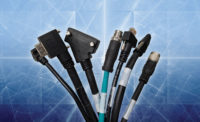Machine vision lenses play a pivotal role in diverse industries, from smartphones to drones, wearables, and beyond. As technology scales down and the trend towards miniaturization accelerates, how does it affect the design and application of these critical lenses?
Miniaturization and Machine Vision Lenses
According to Jon Chouinard, vice president, sales and marketing at 1stVision, the path of miniaturization in lenses is generally not a core focus in machine vision. Instead, the emphasis is on creating standard off-the-shelf lenses tailored for sensors used in the industrial imaging market. “Manufacturers are focused on compact design but have to balance cost and performance,” he says.
Bob Archer, the owner of Archer OpTx, has a slightly different perspective. He observes a trend where “lenses are getting smaller and smaller,” and notes the reduction in the number of elements needed for the optical system. The question then becomes whether these smaller lenses are a product of new manufacturing techniques or if the drive towards miniaturization is fueling manufacturing innovations. As Archer points out, the answer is a bit of both, highlighting a symbiotic relationship between manufacturing techniques and lens design requirements.
Joe Gugliotti, president of R.J. Wilson Inc., points out that the size of machine vision lenses is more influenced by their mounting configuration, such as C-mount or F-mount, than the direct benefits of miniaturization. However, he acknowledges the potential of utilizing optical design concepts from miniaturization as industrial sensors become smaller and more pixel-dense.
Types of Lenses in Machine Vision and Their Applications
There are various types of lenses used in machine vision, each with its unique advantages and application areas.
Vision & Sensors
A Quality Special Section
- Fixed Focal Length Lenses: These lenses have a set field of view. Chouinard mentions that they are most commonly used when the application has a fixed perspective and set distances. In contrast, Archer points out that fixed focal length lenses are ideal when the imaged field’s size is known and won’t change.
- Varifocal Lenses: These lenses allow for multiple fields of view, offering versatility. Experts say that varifocal lenses are suitable for applications that lack a predetermined setup, like logistics and sports analytics. However, Gugliotti notes that in his 36 years, he hasn’t used a varifocal lens due to concerns of changing the optical path and the need for recalibration.
- Telecentric Lenses: These are ideal for high-end applications like measurement and gaging. They provide a direct view across the entire field, ensuring accurate gaging even for round parts or parts with a rounded edge, Gugliotti says.
- Fisheye Lenses: These offer a wide field of view but often come with distortions. Some experts suggest that fisheye lenses are apt for surveillance and autonomous vehicles, while others see them as useful in specialized applications such as inspecting internal threads or contamination within a container.
The push towards miniaturization is reshaping numerous industries, influencing design decisions and fostering innovation. While miniaturization may not be a primary driver, the ripple effects of this trend are noticeable, guiding the future of lens designs and their applications.



